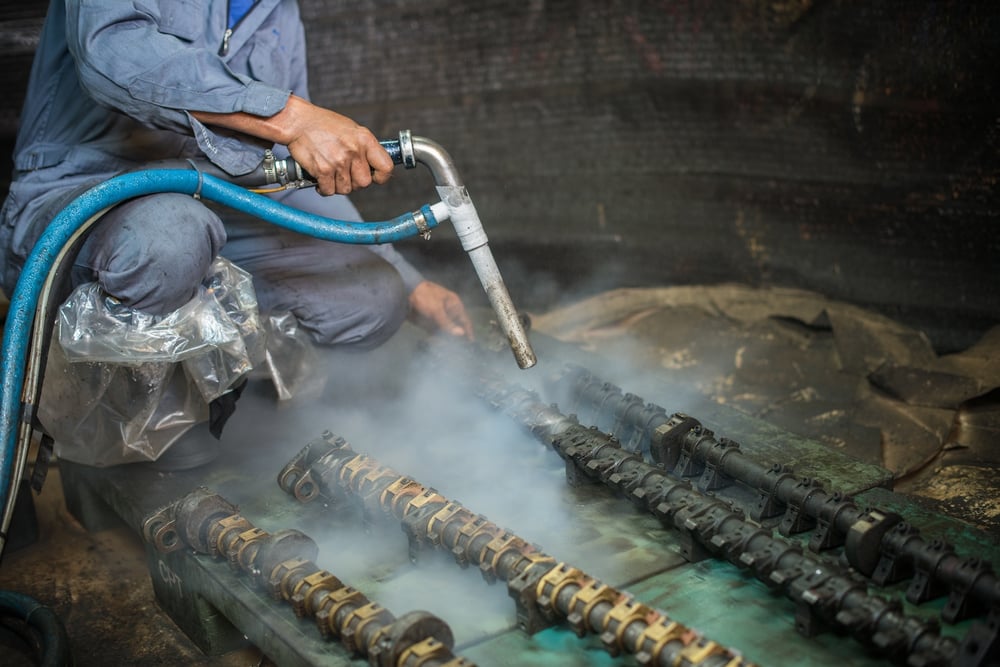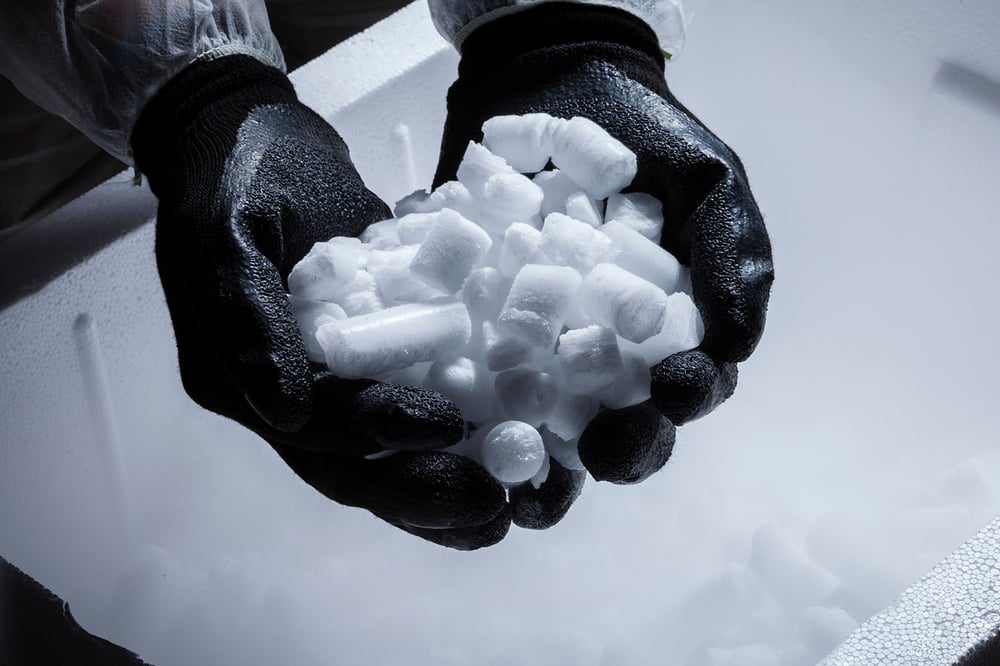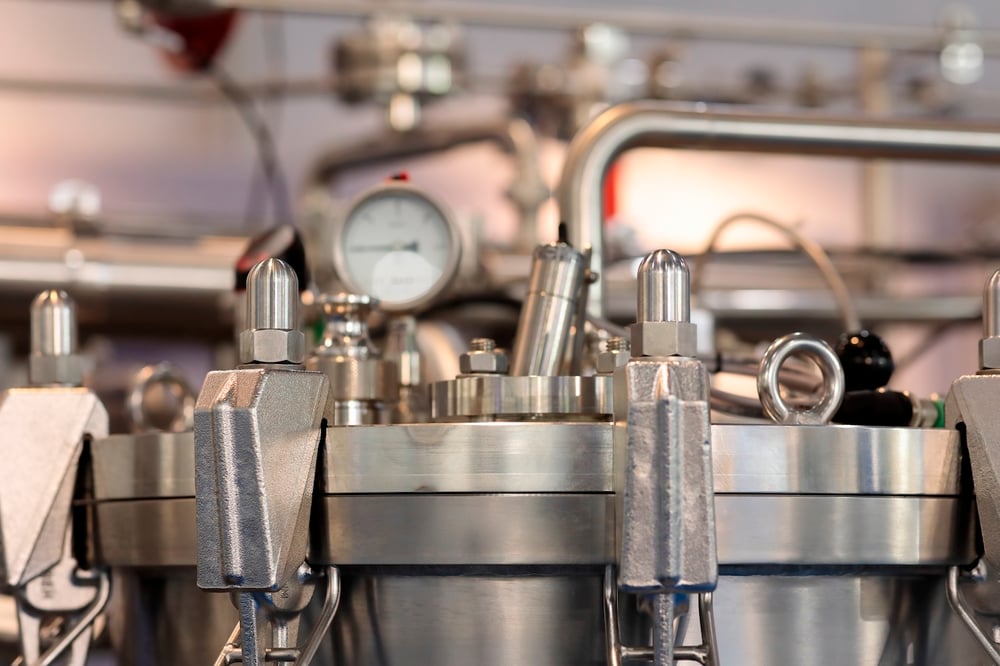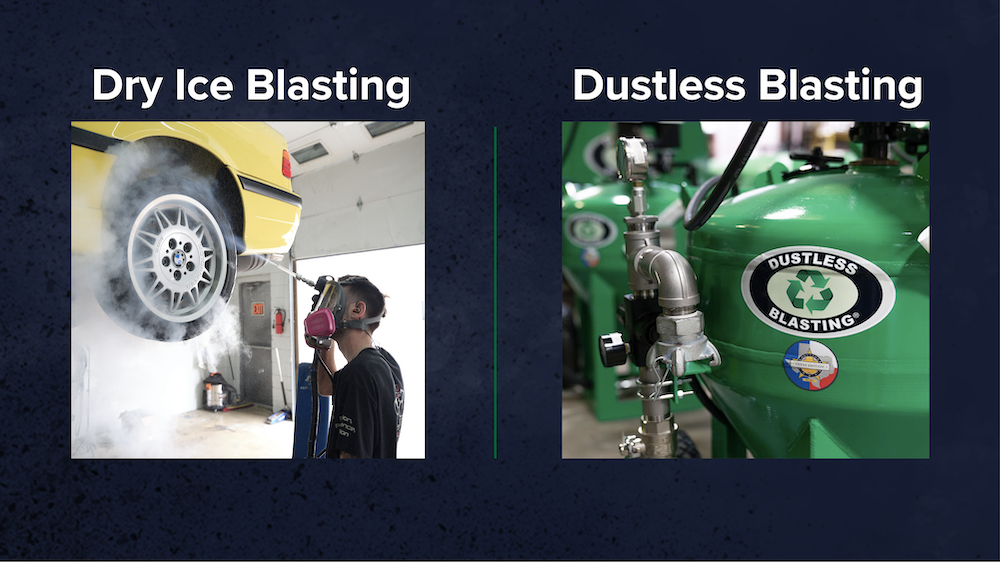Add a headline.
Lorem ipsum dolor amet food truck affogato cronut freegan skateboard photo booth, tousled pickled 90's wayfarers retro succulents hoodie edison bulb ramps. XOXO seitan tote bag, offal vape air plant disrupt chia plaid taxidermy cloud bread microdosing 8-bit.
What is Dry Ice Blasting?
Dry ice blasting also called dry ice cleaning utilizes compressed air to propel dry ice pellets at high speeds toward a surface, lifting dirt and contaminants. As dry ice, which is the solid form of carbon dioxide, hits the surface, it sublimates (transforms directly from solid to gas), effectively removing contaminants without leaving any residue, surface alteration, or secondary waste. This process is ideal for settings where waste reduction is critical or for cleaning delicate materials.

ADVANTAGES OF DRY ICE BLASTING
1 GENTLE ON SURFACES
Dry ice cleaning is a gentle, non-abrasive technique. Properly utilized dry ice blasting tools can strip away contaminants without harming the underlying material. This method is particularly valuable for remediation and restoration efforts, offering a similar level of care as laser cleaning.
2 NO SECONDARY WASTE
Dry ice transforms to gas upon impact, meaning this process doesn't create secondary waste streams. While cleanup of the primary dislodged debris is necessary, it is generally less burdensome than with other cleaning methods.
3 NON-CONDUCTIVE AND NON-TOXIC
Dry ice's unique properties make it a superior cleaning solution across various commercial and industrial settings. Food processing facilities can enhance productivity by cleaning equipment during operation. Electronic service centers also benefit from a cleaning method that is non-conductive and leaves no residues.

DISADVANTAGES OF DRY ICE CLEANING
1 HIGH COSTS
One significant drawback of dry ice blasting is its high expense, both in terms of purchase and storage. Storing dry ice requires temperatures below -78.5 degrees Celsius, needing specialized storage equipment that can cost a substantial amount. Additionally, the proprietary nature of dry ice machine parts often leads to steep maintenance and repair costs.
2 LACKS POWER
Although dry ice blasting technology is advantageous for its gentle cleaning ability, it falls short in power and versatility for more demanding tasks, such as removing tough coatings over extensive areas. Given the high costs associated with dry ice, using it in less-than-ideal scenarios can greatly decrease productivity and increase operational costs, making it less viable compared to other methods.
3 LIMITED VERSATILITY
Though a lack of surface profile is beneficial for some applications, this can limit your options when it comes to projects that need a specific profile for finishes or coatings. The inability of dry ice blasting to create a roughened surface profile means it might not be suitable for tasks requiring surface preparation for bonding or painting. As a result, additional surface treatment may be necessary, which can complicate the cleaning process and increase overall project timelines and costs.
See the complete list of advantages, disadvantages, and dry ice blasting faqs in this blog.
DRY ICE BLASTING EQUIPMENT
How do dry ice blasting machines work? Similar to Dustless Blasting machines, dry ice cleaners use compressed air as the propellant. Dry ice pellets or shavings are propelled through a hose and out of a specially designed nozzle, which optimizes their speed and trajectory toward the target surface. When the dry ice hits the surface, the heat transfer alters the CO2 properties, causing a small explosion that effectively lifts dirt and grime from the substrate.
Most dry ice blasting systems are equipped with an air compressor, temperature-controlled storage for the dry ice, a delivery system that includes hosing and a nozzle, and controls for adjusting air flow and media consumption. Like Dustless Blasting machines, dry ice blasters are available in various sizes and capacities to suit different project scales and user needs.

Dry Ice Media
Dry ice for blasting typically comes in two common forms: pellets and blocks, with costs ranging from approximately $1-3 per pound. Depending on the type of machine and the specifics of the project, you can choose from different forms of dry ice or recycled solid carbon dioxide.
- Pellets: These dry ice pellets are about 1/8 inch in diameter and is one of the more common forms for dry ice blasting. They strike a balance between aggressive cleaning and protecting the surface, making them versatile for various applications.
- Blocks: These larger dry ice blocks can be crushed into different sizes for use. They are ideal for heavy-duty cleaning tasks that require larger ice fragments to remove tougher substances.
- Rice-Sized Particles: These tiny, granular pieces of dry ice are perfect for precision cleaning. They are best for delicate parts and intricate details where minimal impact on the substrate is critical.
- Micropellets: Smaller than typical pellets, micropellet dry ice offers a gentler cleaning action suitable for very delicate or precision-based equipment.
Given the relatively high cost and the need for careful storage and handling to prevent sublimation and ensure safety, it's important to coordinate the purchase and use of dry ice closely with your project timeline to ensure it is used effectively before sublimating.
In contrast, using a dustless blaster provides the flexibility to employ wet, dry, and soda blasting within a single machine. This versatility allows for an almost limitless selection of abrasives, tailored to achieve the desired surface profile and removal rate for each project. An economical abrasive option, crushed glass, costs about $0.10-0.30 per pound and does not require specialized storage, preserving its abrasive quality over time.

DRY ICE BLASTING APPLICATIONS AND USES
Because dry ice cleaning does not create a surface profile, its applications are often best suited for projects requiring a smooth finish. Here's an overview for some popular uses for dry ice blasting:
- Rust Removal: Dry ice blasting solutions effectively remove surface rust and iron oxide from metal surfaces without advancing the rusting process. This method avoids the pitting or other damage often associated with abrasive blasting media and minimizes heat warping, as the cool temperature of the dry ice eliminates the need for water.
- Metal Cleaning: Ideal for intricate metal details or plates, dry ice blasting cleans effectively without producing secondary waste. This makes dry ice perfect for cleaning sensitive components such as electrical panels or contaminants off the underlying parts of engines, helping to prevent corrosion and maintain contamination-free environments, like those found in food processing plants.
- Wood: Dry ice blasting is adept at removing paint and coatings from wood, preserving the integrity of the wood grain and leaving a clean finish. This gentle method is especially beneficial for delicate wooden surfaces where maintaining appearance is crucial.
- Mold Remediation: With the ability for dry ice to propel at surfaces at supersonic speeds and sublimate, deodorize, and eliminate mold without secondary waste, dry ice blasting is highly effective for mold remediation. It is particularly advantageous in areas where the use of harsh chemicals is restricted or undesirable.

DRY ICE CLEANING VS. DUSTLESS BLASTING
Dustless Blasting machines and dry ice cleaning machines serve similar purposes but differ in their cleaning methods and application use cases. Dustless Blasters can use various types of abrasive media and can switch between wet, dry, or soda blasting, allowing for versatility in tackling different cleaning tasks, including removing tough coatings like rust, paint, or epoxy. In contrast, dry ice cleaning machines use solid carbon dioxide pellets that sublimate upon contact, eliminating secondary waste and making them ideal for sensitive environments where additional residue is a concern.
While Dustless Blasters are adaptable in terms of media used, they are generally more straightforward to operate and maintain. They require less specialized training and are designed with fewer operational complexities. On the other hand, dry ice machines are more specialized, requiring specific handling due to the nature of the dry ice media, which also has stringent storage and transportation requirements due to its temperature sensitivity.
Each system has its own set of advantages depending on the specific requirements of the cleaning job, with Dustless Blasting offering more power and flexibility, and dry ice blasting providing a cleaner process with no secondary waste.

Which Method Should I Pick?
While dry ice blasting isn't suitable for every job or business, it excels in specific applications. Before incorporating dry ice blasting into your business, consider the following:
1 What are your cleaning goals? Dry ice blasting is an excellent cleaning process for gently removing light contaminants such as mold or food grease without harming the underlying surface. For budget considerations, soda blasting with a Dustless Blasting system could be a more cost-effective alternative, whereas dry ice might be preferable for more sensitive environments. For tough tasks, such as removing heavy coatings over large areas, traditional abrasive blasting tends to be more economical.
2 What is your clients' budget? Operating and maintaining dry ice blasting equipment can be costly. If your clients are reluctant to cover the higher expenses associated with dry ice blasters, this method might not be feasible for your operations. Evaluate the costs and benefits for your specific needs. Media blasting equipment and the media itself is far cheaper and might be the better option.
3 Does the substrate require an anchor profile? An anchor profile, which consists of microscopic peaks and valleys on a surface and associated with traditional cleaning methods, is crucial for ensuring proper adhesion of new coatings. Since dry ice blasting does not create such a profile because it is a non-abrasive method, it may not be suitable if your job involves surface preparation for recoating. In contrast, abrasive blasting machines, like our blast pots, can clean and simultaneously create an anchor profile, offering a more efficient and effective solution for many businesses.
Find out which method will work best for your business or projects by reading this blog.
UPGRADE YOUR SURFACE PREP WITH DUSTLESS BLASTING
Dustless Blasting is at the forefront of the mobile blasting and cleaning industry, offering a dynamic way to control your future and operate a versatile on-site service. Inspired by the substantial potential and demand in the mobile paint stripping and cleaning industry—which is valued at over $10 billion annually and growing—here's why the dustless blasting surface preparation method is so appealing:
1 Revenue and Demand: Everything around us is painted, rusty, or dirty, and while the demand for cleaning services is widespread, the supply of providers can be limited, presenting a lucrative market opportunity.
2 Cost-Effective and Quick Start: With our comprehensive mobile systems, you can start your business or add to your existing operation as soon as your drive off the lot. Get a fast track to generating revenue with high margins with no ongoing fees or royalties.
3 Scalability and Support for Startups: The business model supports easy scalability, allowing for expansion through additional trailers and crews. Plus, you gain the advantages of community support, marketing tools, and a reputable brand without the burden of franchise fees.
4 Versatility: Whether you're launching a new venture or expanding an existing one, Dustless Blasting is a smart investment. It's highly adaptable, capable of handling diverse jobs across multiple industries. For existing businesses, consider integrating soda blasting—a cost-effective alternative to dry ice—for cleaning tasks such as removing soot from fire-damaged buildings or cleaning food-grade surfaces. This not only broadens the range of services you can offer but also controls operational costs, enhancing profitability.
Next Steps
Ready to take the next step with a versatile, cost-effective dustless blaster? Download our product catalog below or book a meeting with our blast experts to start blasting today!
